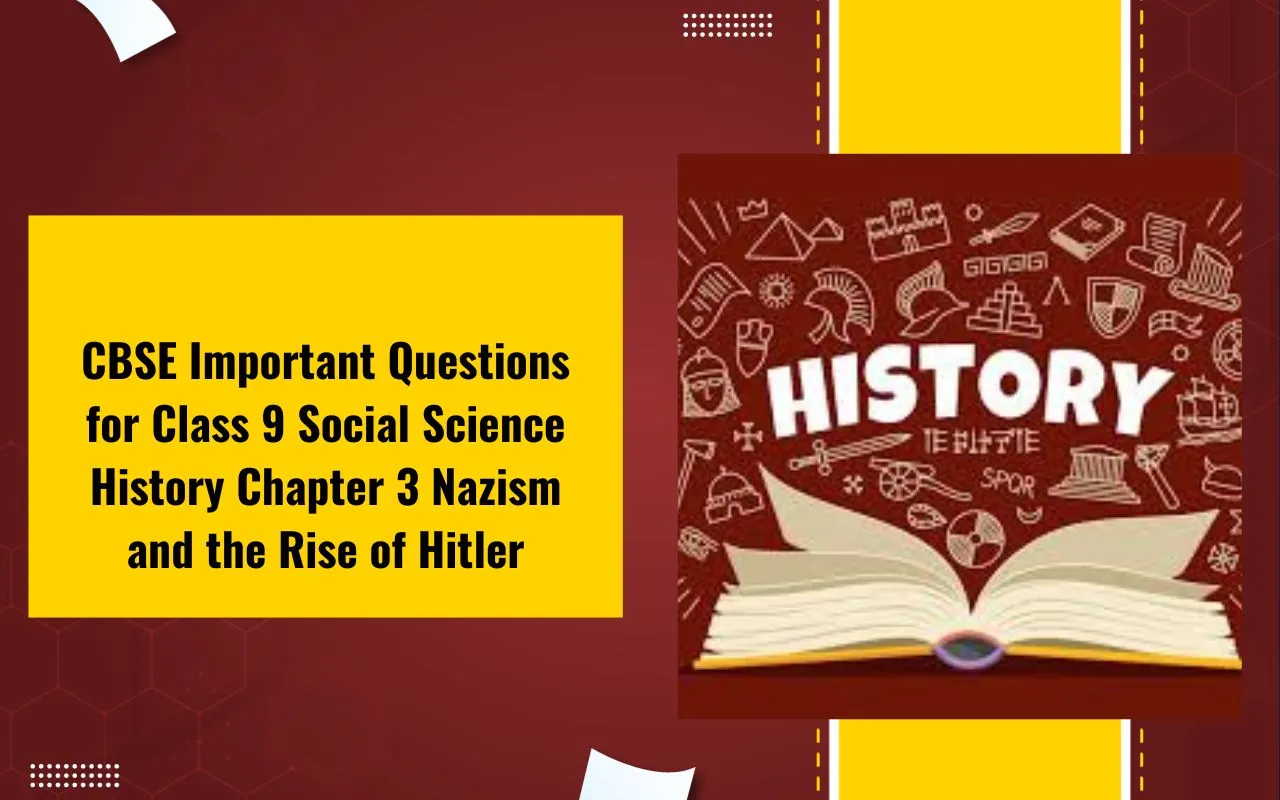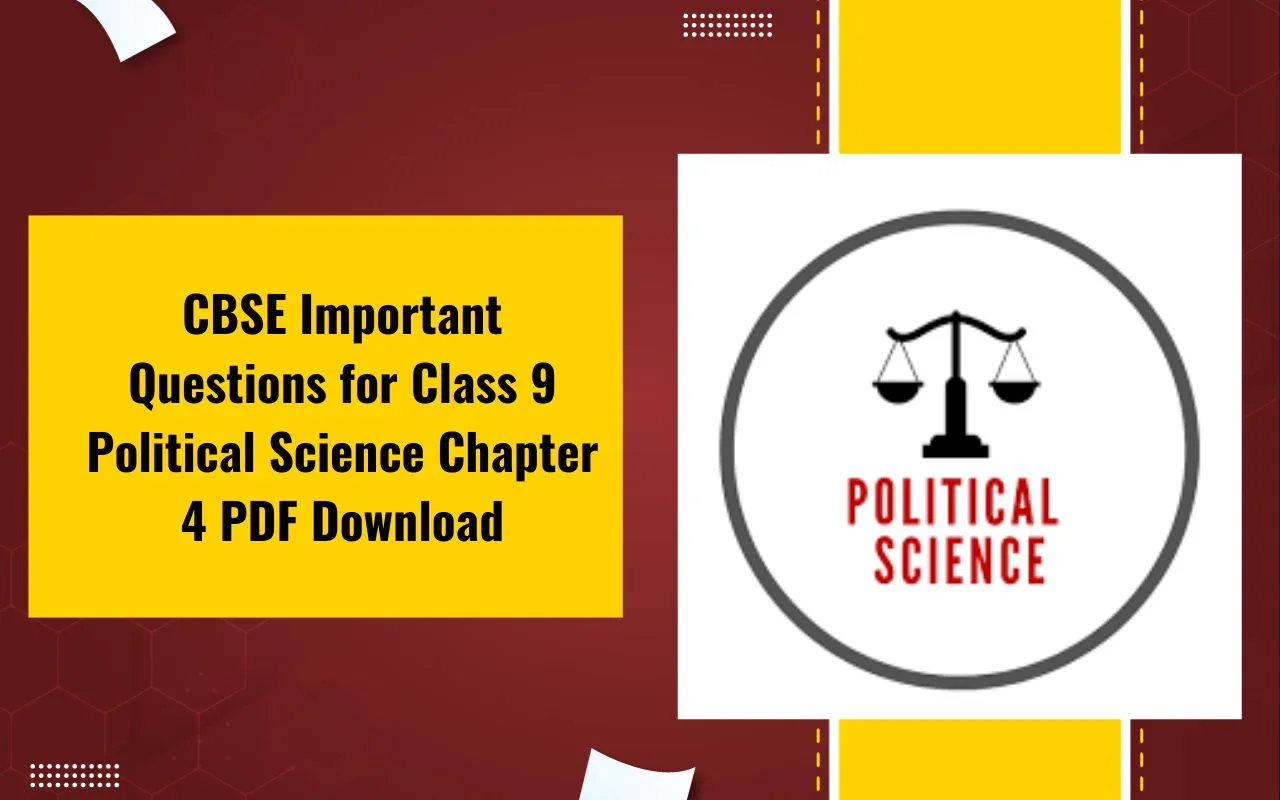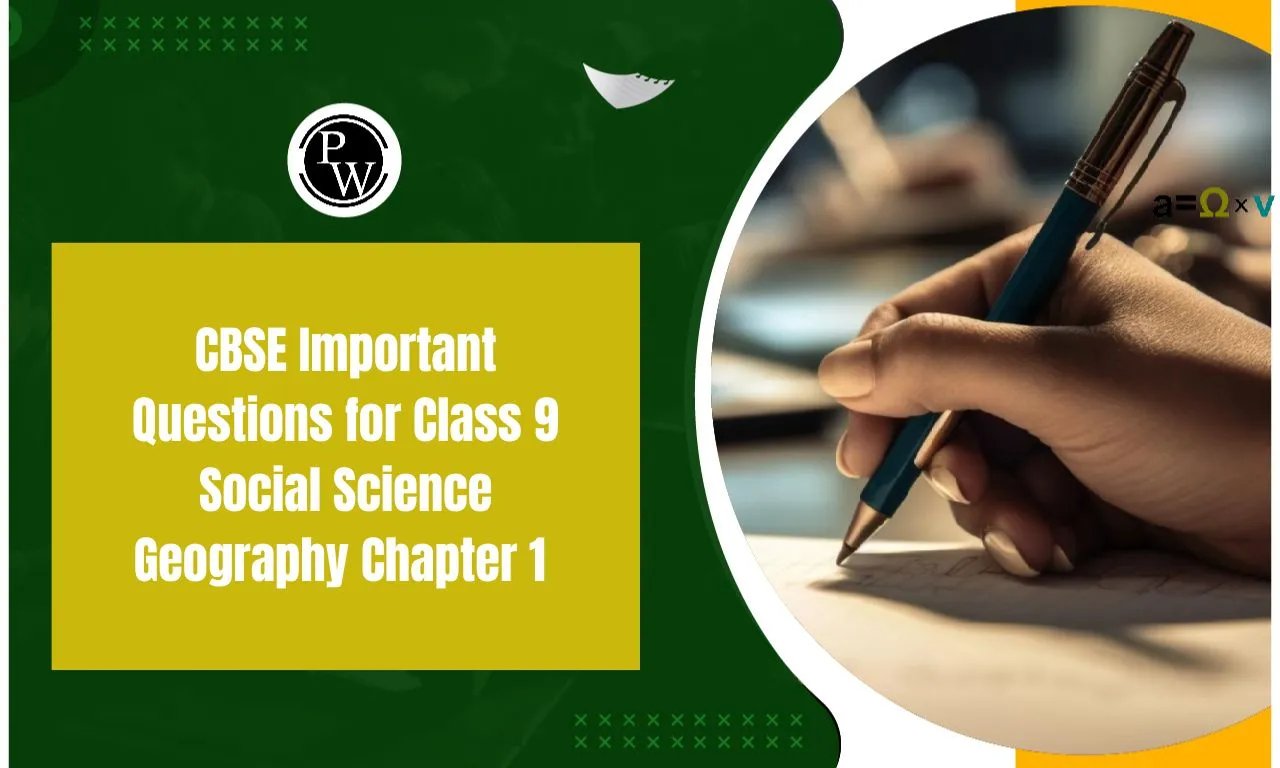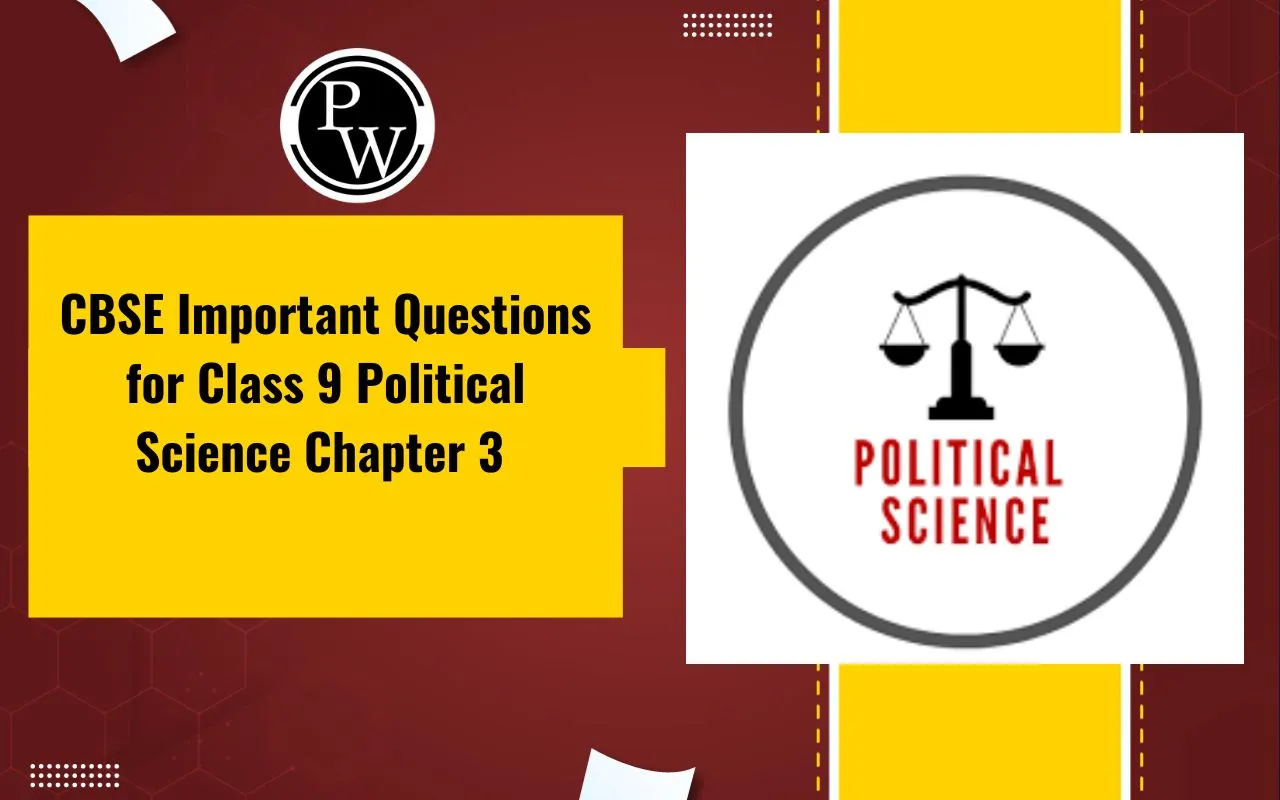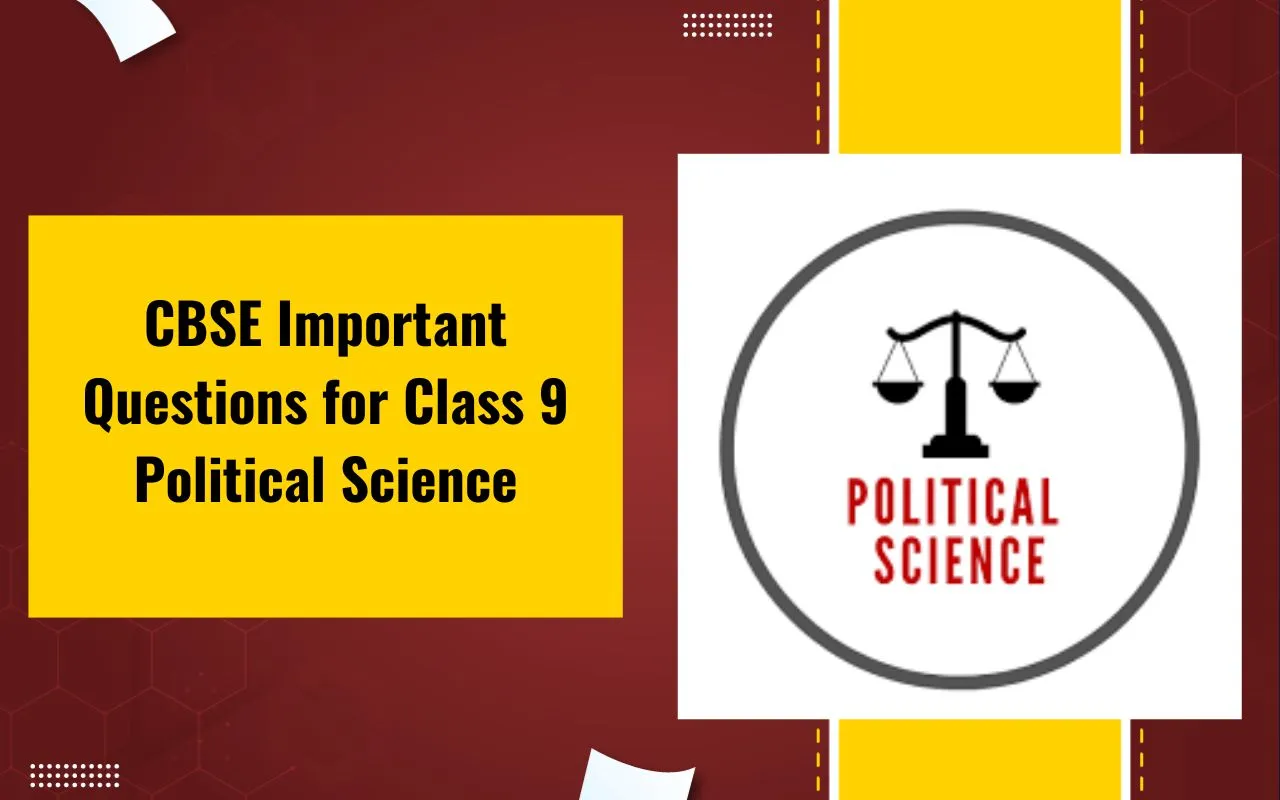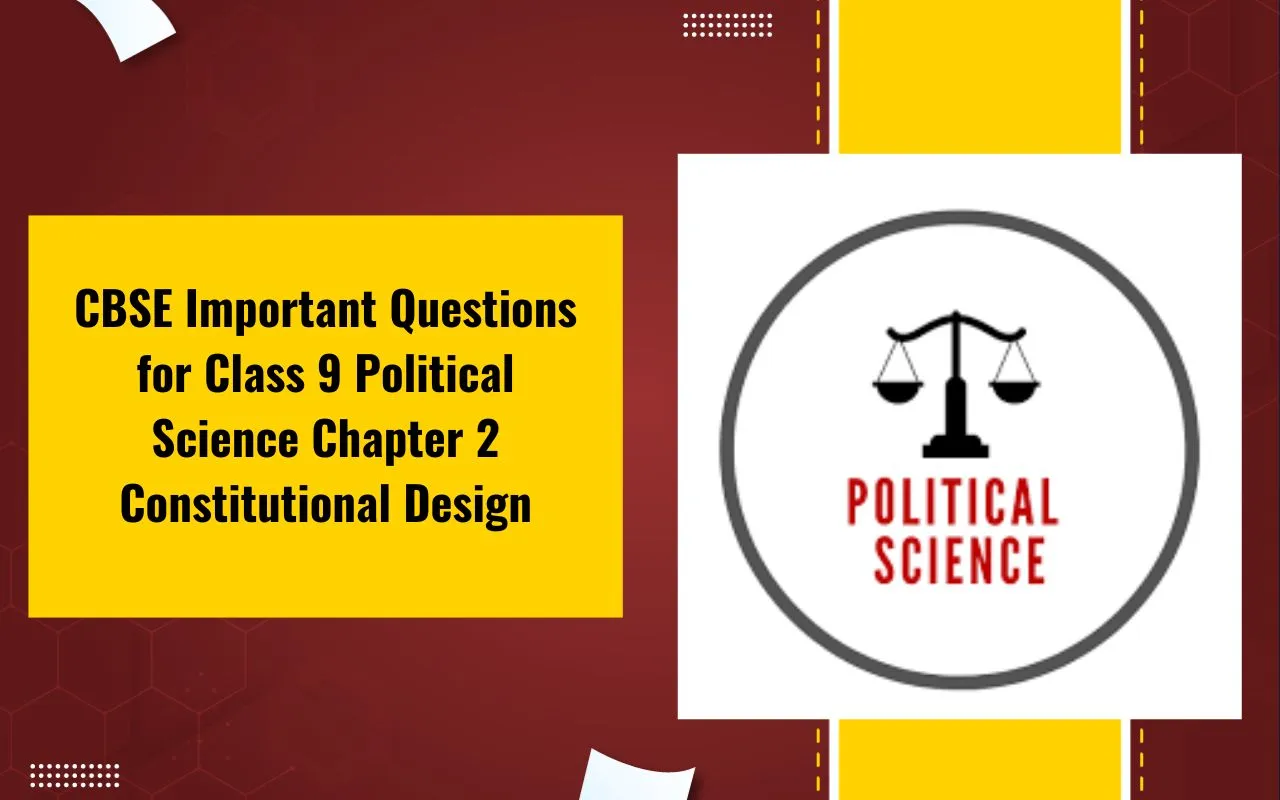
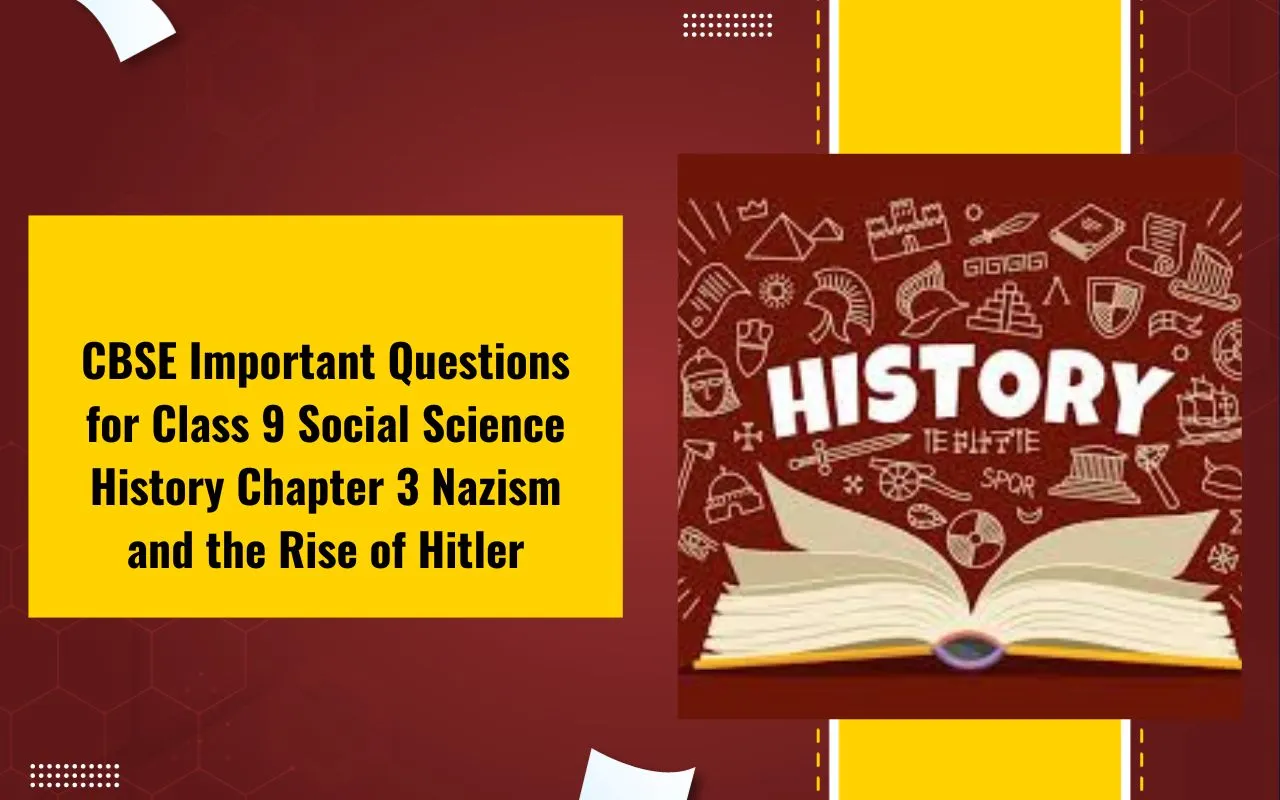
CBSE Important Questions for Class 9 Social Science History Chapter 3 Nazism and the Rise of Hitler: Solving important questions from Chapter 3, "Nazism and the Rise of Hitler," is very helpful for understanding the key events that shaped Germany and the world during the early 20th century. These questions cover topics like the causes of Hitler’s rise to power, his ideologies, and the impact of Nazi policies.
By practicing these questions, students can better grasp how Hitler's actions, such as the Enabling Act and Nazi propaganda, led to the totalitarian regime and eventually World War II.
It also helps in understanding the Holocaust and the broader consequences of Nazi rule. Overall, these questions help build a strong foundation of knowledge for exams and provide a clear view of historical events.
CBSE Important Questions for Class 9 Social Science History Chapter 3 Nazism and the Rise of Hitler Overview
Chapter 3 Nazism and the Rise of Hitler in CBSE Class 9 Social Science History deals with the political and social conditions that led to the rise of Adolf Hitler and the Nazi Party in Germany.
The chapter explains the impact of the Treaty of Versailles, the economic hardships of the Weimar Republic, and how Hitler's ideas, like anti-Semitism and Aryan supremacy, gained support. It also covers the events leading to Hitler becoming the Chancellor and his policies after taking power, such as the Enabling Act and the Nuremberg Laws.
The exercise of this chapter focuses on:
-
Key Concepts: Understanding the causes behind the rise of Hitler, the formation of Nazi ideology, and the policies implemented by the Nazi regime.
-
Historical Events: Questions will ask about important events like the Great Depression, the Hitler Youth, and the Night of the Long Knives.
-
Social Impacts: How Nazi policies affected different groups like Jews, women, and youth.
-
Analysis Questions: Asking you to critically evaluate the consequences of Nazi rule and the rise of totalitarian regimes.
CBSE Important Questions for Class 9 Social Science History Chapter 3 Nazism and the Rise of Hitler PDF
You can download the CBSE Important Questions for Class 9 Social Science History Chapter 3 Nazism and the Rise of Hitler in PDF format from the link below. This PDF provides a comprehensive collection of important questions that cover key topics such as the rise of Hitler, Nazi ideology, the consequences of the Treaty of Versailles, and the social and political impacts of Nazi rule in Germany. Solving these questions will help you prepare effectively for exams by understanding crucial events, ideologies, and the consequences of Hitler’s policies.
CBSE Important Questions for Class 9 Social Science History Chapter 3 Nazism and the Rise of Hitler
Here are some important questions for Class 9 Social Science History Chapter 3 Nazism and the Rise of Hitler that will help you in your preparation:
Section – A [1 Mark]
Q.1. Which of these were the reasons for Nazi hatred of the Jews?
(A) Jews had been stereotyped as killers of Christ
(B) They were ‘usurers’, i.e. moneylenders
(C) The Jews had always cheated the Nazis
(D) Both (A) and (B)
Ans. (D) Both (A) and (B)
Q.2. When did the Second World War come to an end?
(A) January 1944
(B) May 1945
(C) June 1946
(D) August 1947
Ans. (B) May 1945
Q.3. What was Nazi ideology with regard to schoolchildren?
(A) He believed that education of children was not necessary
(B) A control should be kept over children both inside and outside school
(C) All children should be regarded as equal
(D) None of the above
Ans. (B) A control should be kept over children both inside and outside school
Q.4. What was the process of Nazi schooling for ‘Good German children’?
(A) Racial science was introduced to justify Nazi ideas of race
(B) School textbooks were rewritten
(C) Even the function of sports was to nurture a spirit of violence and aggression among children
(D) All the above
Ans. (D) All the above
Q.5. What was the thinking of Nazi Germany about women?
(A) The fight for equality between men and women was wrong
(B) Girls had to maintain the purity of the race and teach their children Nazi values
(C) Their role was to be mothers who had to be bearers of the Aryan culture and race
(D) All the above
Ans. (D) All the above
Q.6.In which country did Nazi Germany first try its experiment of ‘concentration of Germans in one area’?
(A) Poland
(B) France
(C) Czechoslovakia
(D) England
Ans. (A) Poland
Q.7. Who wrote ‘Mein Kampf’?
(A) Herbert Spencer
(B) Charles Darwin
(C) Adolf Hitler
(D) Goebbels
Ans. (C) Adolf Hitler
Q.8. What did the term ‘Evacuation’ mean?
(A) Living in separately marked areas called ghettos
(B) Deporting people to gas chambers
(C) Arrested without any legal procedures
(D) Detained without due process of law
Ans. (B) Deporting people to gas chamber
Q.9. What was the name given to gas chambers by Nazis?
(A) Killing Machine
(B) Solution Areas
(C) Revolutionary Ground
(D) Disinfection Areas
Ans. (D) Disinfection Area
Q.10. Which article of the Weimar Constitution gave the President the powers to impose emergency, suspend civil rights, and rule by decree in Germany?
(A) 46
(B) 47
(C) 48
(D) None of these
Ans. (C) 48
Section – B [2 Marks]
Q.11. Name the original name of the Nazi party.
Sol. The original name of the Nazi Party was the Nationalist Socialist German Workers' Party, which was later renamed the Nazi Party.
Q.12. Who were considered the ‘desirables’ under Nazi rule?
Sol. Nordic German Aryans were considered the ‘desirables’ under Nazi rule.
Q.13. Who were mockingly called ‘November criminals’?
Sol. Those who supported the Weimar Republic, mainly Socialists, Catholics, and Democrats, became easy targets of attack in conservative nationalist circles. They were mockingly called the ‘November criminals’.
Q.14. What was the name given to the German Parliament?
Sol. The German Parliament was called the Reichstag.
Q.15. Which move of Hitler is said to be a historical blunder?
Sol. Hitler attacked the Soviet Union in June, 1941. In this, historic blunder. Hitler exposed the German Western front to British aerial bombing and the Eastern front to the powerful Soviet armies.
Section – C [3 Marks]
Q.16. Who was Hitler? How did Hitler reconstruct Germany?
Sol. Adolf Hitler was the founder of the Nazi party, who became the Chancellor of Germany in 1933. He soon became the dictator of Germany. To reconstruct Germany, Hitler assigned the • Social Engineering: Nazism aimed to create a racially pure society through eugenics and forced sterilization. • Cult of Personality: Hitler was glorified as a charismatic leader, fostering a cult-like devotion among supporters.
Q.17. What were the main features of Hitler’s geopolitical concept of Lebensraum? Give three features.
Sol. The main features of Hitler’s geopolitical concept of Lebensraum (living space) were:
(i) He believed that new territories needed to be acquired for settlement.
(ii) The settlers in these new lands would maintain close ties with their place of origin.
(iii) The new settlements would enhance the material resources and power of the German nations. By capturing Poland, Hitler put his new ideas into practice.
Q.18. What were the main features of Nazism?
Sol. Here are the main features of Nazism:
• Racial Supremacy: Nazism believed in the superiority of the "Aryan" race, leading to discrimination against Jews, Romani people, and others.
• Authoritarianism: Nazism centralized power in the hands of Adolf Hitler, suppressing opposition and eliminating democratic freedoms.
• Militarism and Expansionism: Nazism sought to expand German territory aggressively, leading to conflicts like World War II.
• Anti-Semitism: Nazism promoted hatred and persecution of Jews, culminating in the Holocaust.
• Propaganda: The Nazis used propaganda extensively to manipulate public opinion and promote their ideology.
Section – D [5 Marks]
Q.19. What measures did Hitler take to create an exclusive racial community of pure Germans?
Sol. Hitler took several steps to create an exclusive racial community of pure Germans:
(i) He created an exclusively racial community of pure Germans by physically eliminating all those who were seen as ‘undesirable’ in the extended empire.
(ii) He wanted only a society of pure and healthy Nordic Aryans. They alone were considered ‘desirable’. Only they were seen as worthy of prospering and multiplying against all others who were classed as ‘undesirable’.
(iii) Jews were not the only community classified as ‘undesirable’. Many Gypsies and blacks living in Nazi Germany were considered as racial ‘inferiors’. They were widely persecuted.
(iv) Even Russians and Poles were considered subhuman and therefore, understanding of any humanity when Germany occupied Poland and parts of Russia, captured civilians were forced to work as slave labour.
(v) Jews remained the worst sufferers in Nazi Germany. From 1933 to 1938 the Nazis terrorised, pauperised and segregated the Jews, compelling them to leave the country. The next phase, 1939-1945, aimed at concentrating them in certain areas and eventually killing them in gas chambers in Poland.
Q.20. What was the famous Enabling Act? Mention some of its important provisions.
Sol. On 3 March 1933, The famous Enabling Act was passed. This Act established Hitler’s dictatorship in Germany. It gave Hitler all powers to sideline Parliament and rule by decree. Some of its provisions were:
(i) The structures of democratic rule were dismantled and dictatorship was established in its place.
(ii) All political parties and trade unions were banned except for the Nazi Party and its affiliates. The state established complete control over the economy, media, army and judiciary.
(iii) Special surveillance and security forces were created to control and order society in ways that the Nazis wanted.
(iv) Apart from the already existing regular police in green uniform and the SA or the Storm Troopers, these included the Gestapo (secret state police), and the SS (the protection squads), criminal police and the security service or (SD).
(v) People could now be detained in Gestapo torture chambers, rounded up and sent to concentration camps, deported at will or arrested without any legal procedures. The police forces acquired powers to rule with impunity.
Benefits of Solving CBSE Important Questions for Class 9 Social Science History Chapter 3
Better Understanding of Key Concepts: By solving important questions, students gain a deeper understanding of significant topics like Nazism, Hitler's rise to power, the role of propaganda, and the impact of the Nazi regime. This reinforces their knowledge of historical events and their causes.
Improved Exam Preparation: Important questions often cover the most relevant and frequently asked topics, helping students focus on key areas. This focused approach ensures better preparation and boosts confidence for the exams.
Critical Thinking Development: Many of the important questions require students to analyze and evaluate historical events, which enhances their critical thinking and problem-solving skills. They learn to draw connections between different historical factors and their consequences.
Strengthened Answer Writing Skills: By practicing important questions, students become familiar with the format and structure of exam answers. This practice improves their ability to write concise, well-organized, and clear responses during exams.
Time Management: Solving important questions allows students to simulate exam conditions, helping them manage their time effectively. They can practice answering within a set time limit, improving speed and accuracy during the actual exam.
Confidence Boost: Regularly solving these questions and getting them right increases a student’s confidence. The sense of achievement gained from understanding complex historical topics will motivate them to continue their studies.
Better Retention of Information: Repeated practice of important questions helps reinforce memory and improves retention of historical facts. The more a student solves, the more they are likely to remember important details in the exam.
CBSE Important Questions for Class 9 Social Science History Chapter 3 FAQs
Who was Adolf Hitler?
What was the Nazi Party?
What was the concept of Lebensraum?
What was the Treaty of Versailles, and how did it affect Germany?

